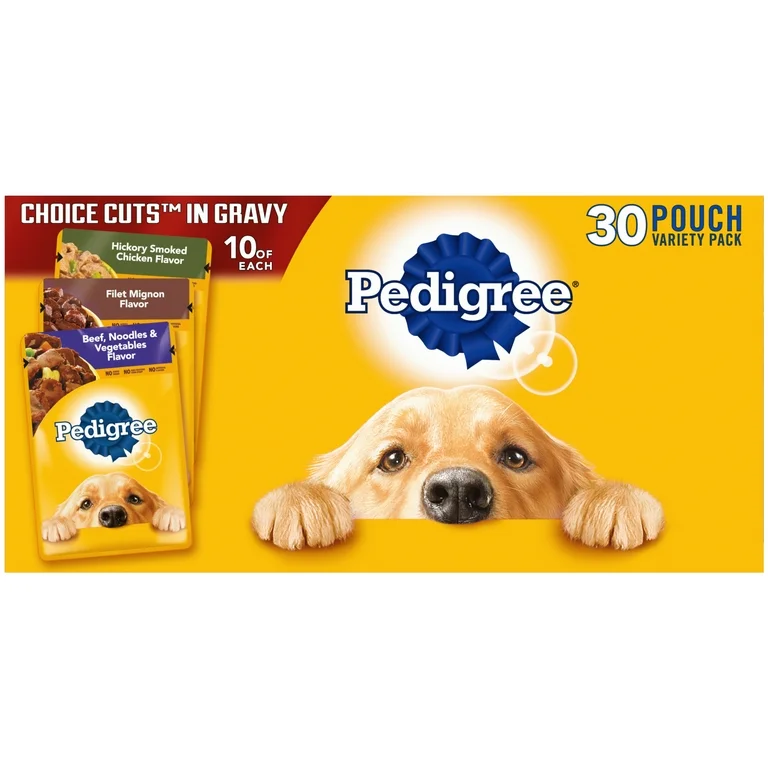Table of Contents
Dogs, just like humans, can suffer from digestive problems. If your furry friend experiences frequent vomiting, diarrhea, bloating, or loss of appetite, their diet could be the culprit.
Finding the right dog food for sensitive stomachs can make all the difference in their health and happiness.
In this guide, we’ll explore the causes of sensitive stomachs in dogs, key ingredients to look for, the best food options, and the pros and cons of different diets.
Why Do Some Dogs Have Sensitive Stomachs?
Not all dogs can digest food in the same way. Some breeds have naturally weak digestive systems, while others may develop stomach sensitivities over time. Here are some of the most common causes:
- Food Allergies or Intolerances – Certain ingredients, such as beef, dairy, wheat, or soy, can cause digestive upset.
- Poor-Quality Ingredients – Fillers, artificial preservatives, and low-quality proteins can be difficult for dogs to digest.
- Sudden Dietary Changes – Switching food too quickly can cause an upset stomach.
- Health Conditions – Pancreatitis, irritable bowel syndrome (IBS), or infections may contribute to sensitivity.
Understanding the root cause of your dog’s digestive issues is the first step in finding the right food.
What to Look for in Dog Food for Sensitive Stomach
When choosing dog food for sensitive stomachs, consider the following factors:
1. Limited Ingredients
Fewer ingredients mean fewer chances for digestive issues. Limited-ingredient diets (LID) often exclude common allergens.
2. High-Quality Proteins
Choose real meat sources like chicken, turkey, salmon, or lamb. Avoid meat by-products and artificial flavors.
3. Easily Digestible Carbohydrates
Ingredients like brown rice, oatmeal, and sweet potatoes are gentle on the stomach. Corn, wheat, and soy should be avoided.
4. Added Probiotics and Prebiotics
These help balance gut bacteria, improving digestion and nutrient absorption.
5. No Artificial Additives
Preservatives, colors, and artificial flavors can irritate a dog’s digestive system. Always choose natural formulations.
Top 3 Dog Foods for Sensitive Stomachs
Here are three highly recommended options for dogs with sensitive stomachs:
1. Hill’s Science Diet Sensitive Stomach & Skin
Overview: Hill’s Science Diet is a vet-recommended brand known for its easily digestible formulas. It contains prebiotic fiber and real chicken to support digestive health.
Pros:
✅ Real chicken as the primary protein source
✅ Omega-6 fatty acids for healthy skin and coat
✅ No artificial preservatives, colors, or flavors
✅ Prebiotic fiber promotes gut health
Cons:
❌ Higher price than some other brands
❌ Some dogs may dislike the taste
2. Purina Pro Plan Sensitive Skin & Stomach
Overview: This formula uses real salmon and oatmeal to provide gentle, nutritious food for dogs with digestive issues. It also contains live probiotics.
Pros:
✅ Salmon is an excellent protein for sensitive stomachs
✅ Contains no corn, wheat, or soy
✅ Omega-3 fatty acids support skin and joint health
✅ Includes live probiotics for better digestion
Cons:
❌ Some dogs may develop gas or bloating
❌ The fish-based formula has a strong smell
3. Blue Buffalo Basics Limited Ingredient Diet
Overview: This formula is designed for dogs with food sensitivities. It avoids common allergens like chicken, beef, and dairy.
Pros:
✅ Turkey is the main protein source
✅ No artificial additives or fillers
✅ Contains pumpkin and pea fiber for digestion
✅ Free from common allergens like wheat, corn, and soy
Cons:
❌ More expensive than other brands
❌ Some dogs may not like the texture
Homemade vs. Store-Bought Dog Food for Sensitive Stomachs
Some pet owners prefer homemade food to control ingredients, but this approach comes with challenges. Here’s a comparison:
| Aspect | Homemade Dog Food | Store-Bought Dog Food |
|---|---|---|
| Nutrient Balance | Requires vet guidance to be complete | Pre-formulated for balanced nutrition |
| Convenience | Time-consuming preparation | Ready to serve |
| Ingredient Control | Full control over what goes in | Limited control |
| Cost | Can be expensive depending on ingredients | Various price ranges available |
While homemade food offers customization, store-bought options provide convenience and complete nutrition. If you choose to make your dog’s food at home, consult your vet for a balanced recipe.
Signs You Should Switch Your Dog’s Food
If your dog displays any of these symptoms, their current food may not be the best fit:
- Frequent vomiting or diarrhea
- Excessive gas or bloating
- Loss of appetite
- Itchy skin or excessive scratching
- Weight loss or difficulty gaining weight
A gradual switch to a better formula can improve your dog’s digestion and overall health.
Tips for Transitioning to a New Dog Food
Switching foods too quickly can worsen digestive issues. Follow this 7-day transition plan:
- Day 1-2: 75% old food, 25% new food
- Day 3-4: 50% old food, 50% new food
- Day 5-6: 25% old food, 75% new food
- Day 7: 100% new food
If your dog shows signs of distress (vomiting, diarrhea, or refusing food), slow down the transition and consult a vet if needed.
Final Thoughts
Finding the right dog food for sensitive stomachs can greatly improve your pet’s quality of life. The best formulas contain high-quality proteins, digestible carbohydrates, probiotics, and no artificial additives. Brands like Hill’s Science Diet, Purina Pro Plan, and Blue Buffalo Basics offer excellent choices.
If your dog continues to experience digestive issues despite dietary changes, consult a veterinarian to rule out underlying health conditions. A proper diet ensures your furry friend stays happy, healthy, and energetic!







